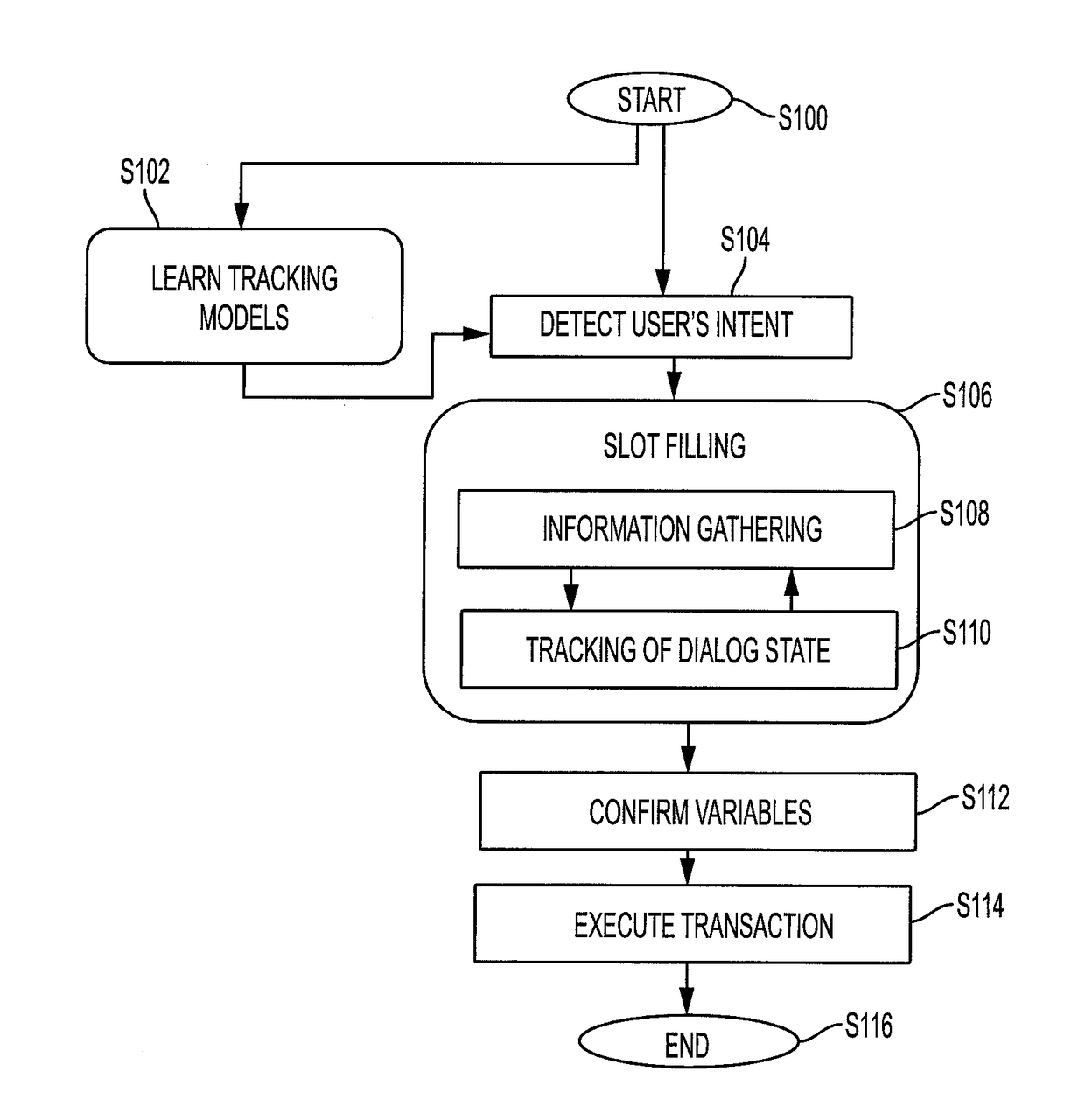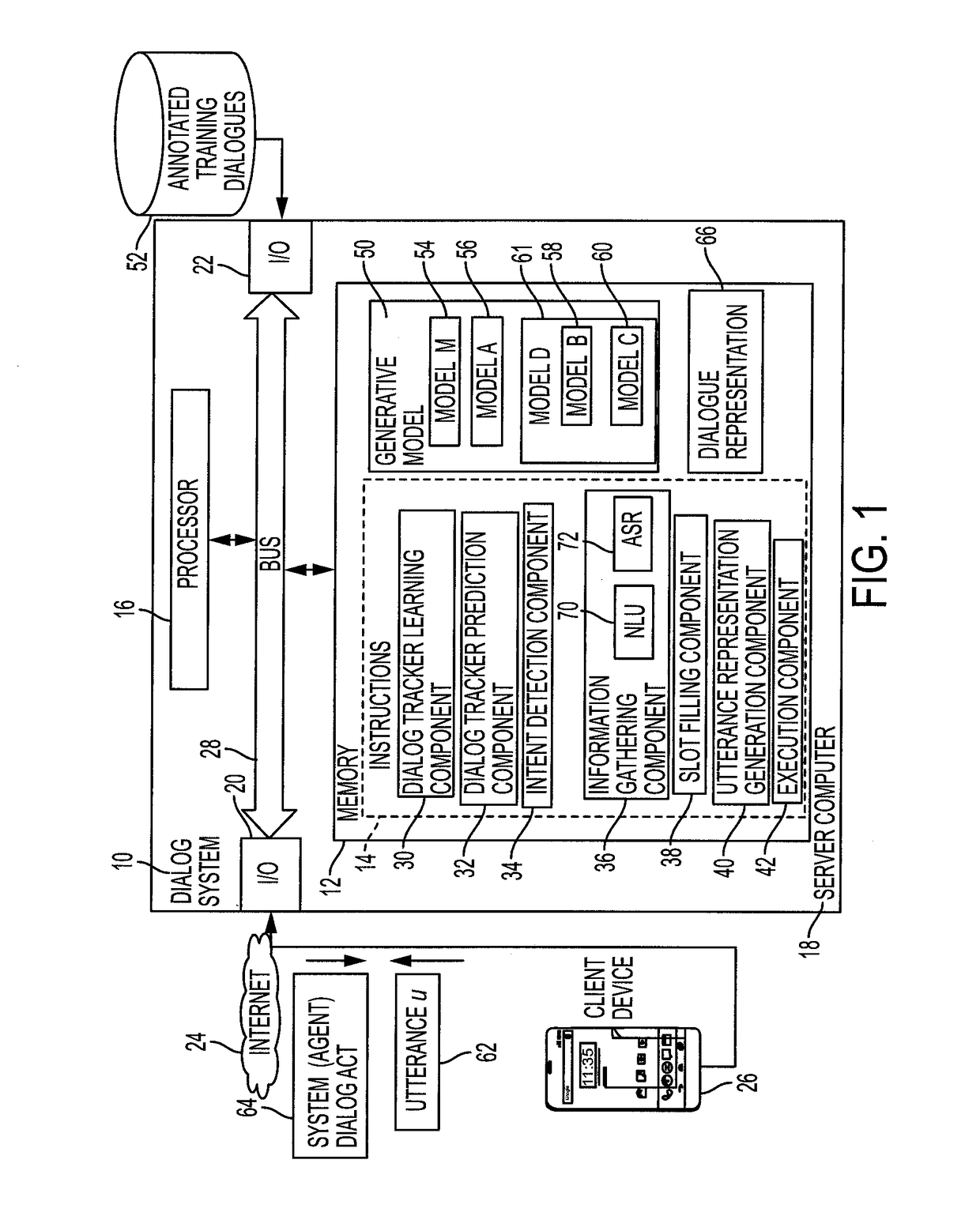Generative discriminative approach for transactional dialog state tracking via collective matrix factorization
a transactional dialog and generative discrimination technology, applied in the field of digital systems, can solve problems such as face challenges, difficult system recognition or understanding of user utterances, and inability to directly observe true user utterances
- Summary
- Abstract
- Description
- Claims
- Application Information
AI Technical Summary
Benefits of technology
Problems solved by technology
Method used
Image
Examples
examples
[0098]The dialog domain used for the evaluation of the dialog tracker and the component probability models used for the domain are first described. Then, a set of experimental results obtained with the tracker and a comparison to existing trackers is described.
[0099]The DSTC-2 dialog domain described in Williams, et al., “The dialog state tracking challenge,” Proc. SIGDIAL 2013 Conf., pp. 404-413, 2013, was used. In this domain, the user queries a database of local restaurants. The dataset for the restaurant information domain was originally collected using Amazon Mechanical Turk. A usual dialog proceeds as follows: first, the user specifies his personal set of constraints concerning the restaurant. Then, the system offers the name of a restaurant that satisfies the constraints. The user then accepts the offer, and may request additional information about the accepted restaurant. The dialog ends when all the information requested by the user has been provided. In this context, the d...
PUM
 Login to View More
Login to View More Abstract
Description
Claims
Application Information
 Login to View More
Login to View More - R&D
- Intellectual Property
- Life Sciences
- Materials
- Tech Scout
- Unparalleled Data Quality
- Higher Quality Content
- 60% Fewer Hallucinations
Browse by: Latest US Patents, China's latest patents, Technical Efficacy Thesaurus, Application Domain, Technology Topic, Popular Technical Reports.
© 2025 PatSnap. All rights reserved.Legal|Privacy policy|Modern Slavery Act Transparency Statement|Sitemap|About US| Contact US: help@patsnap.com



